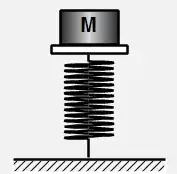Let's say I'm holding a one-liter water bottle, full of water, which I then drop.
Before dropping the water bottle, the equilibrium is for there to be a pressure gradient in the water canceling the gravitational force on the water. While the bottle is in free fall, the new equilibrium is constant pressure everywhere. Should I expect the water to come to this new equilibrium in the few tenths of a second it takes the water bottle to fall?
I expect the answer is basically yes, because density changes (and therefore pressure changes) should propagate at around the speed of sound, and p-waves might bounce around a few times while exponentially dying away (depending on boundary conditions created by the material of the bottle?), at the end of which we have equilibrium. So for a 30-cm bottle with sound speed 1500 m/s, I might guess the time is a few times .02s, which is longer than the ~.5s it takes for the bottle to fall from my hand to the ground.
Does this sort of reasoning make any sense? How can I justify it in a less handwavy manner?
